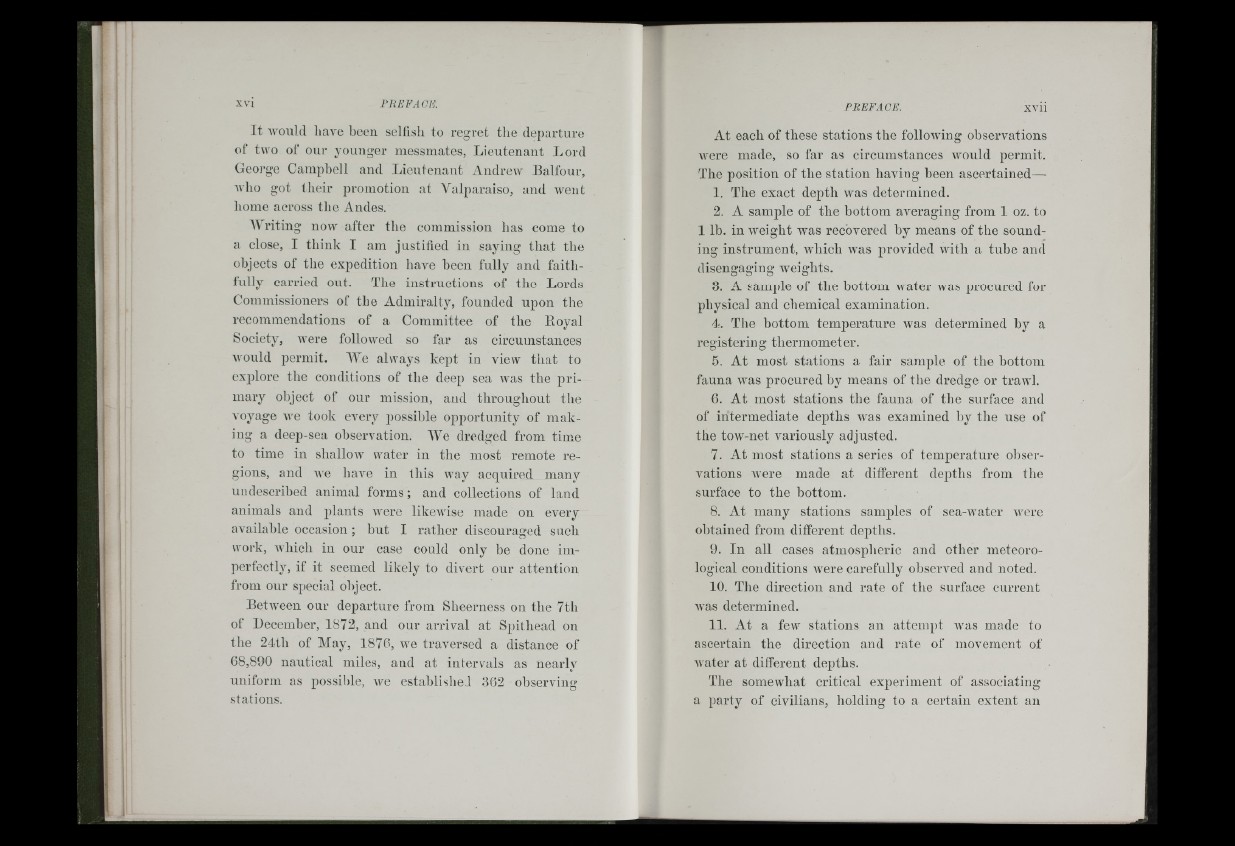
It would have been selfish to regret the departure
of two of our younger messmates, Lieutenant Lord
George Campbell and Lieutenant Andrew Balfour,
Avho got their promotion at Valparaiso, and went
home across the Andes.
AAViting now after the commission has come to
a close, I think I am justified in saying that the
objects of the expedition have been fully and faithfully
carried out. The instructions of the Lords
Commissioners of tbe Admiralty, founded upon the
recommendations of a Committee of the Boyal
Society, were followed so far as circumstances
Avould permit. AVe always kept in view that to
explore the conditions of the deep sea was the primary
object of our mission, and throughout the
voyage Ave took every possible opportunity of making
a deep-sea observation. AAV dredged from time
to time in shalloAV water in the most remote regions,
and AA'e have in this way acquired many
undescribed animal forms; and collections of land
animals and plants Avere likewise made on every
available occasion; but I rather discouraged such
work, AAdiich in our case could only be done imperfectly,
if it seemed likely to divert our attention
from our special object.
BetAveen our departure from Sheerness on the 7th
of December, 1872, and our arrival at Spithead on
the 24th of May, 1876, Ave traversed a distance of
68,890 nautical miles, and at intervals as nearly
uniform as possilile, Ave established 362 observing
stations.
At each of these stations the folloAving observations
Avere made, so far as circumstances Avould permit.
The position of the station haAung been ascertained—
1. The exact depth was determined.
2. A sample of the bottom averaging from 1 oz. to
1 lb. in AAmight was recovered by means of the sounding
instrument, wdiich was provided with a tube and
disengaging w^eights.
3. A sample of the bottom Avater was procured for
physical and chemical examination.
4. The bottom temperature was determined by a
registering thermometer.
5. At most stations a fair sample of the hottom
fauna \Ans procured by means of the dredge or traAAd.
6. At most stations the fauna of the surface and
of intermediate depths Avas examined hy the use of
the tow-net variously adjusted.
7. At most stations a series of temperature observations
Avere made at different depths from the
surface to the bottom.
8. At m a n y s t a t io n s s am p le s o f s e a -w n te r Avere
o b ta in e d fr om d if fe r e n t d e p th s .
9. In all cases atmospheric and other meteorological
conditions AAnre carefully observed and noted.
10. The direction and rate of the surface current
was determined.
11. At a few s t a t io n s a n a t t em p t Avas m a d e to
a s c e r ta in th e d ir e c t io n a n d r a t e of m o v em e n t of
Avater at d iffe r en t d e p th s .
The somewhat critical experiment of associating
a party of civilians, holding to a certain extent an